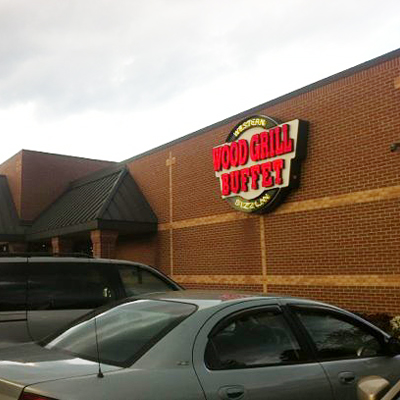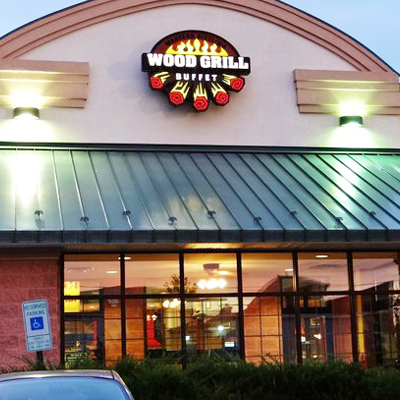When we think of casinos, two things often come to mind: the thrill of games like roulette and the indulgence of all-you-can-eat buffets. But have we ever stopped to consider how both are designed to give the house an edge? In fact, home-style buffets blending comfort with the gaming scene illustrate how dining can be just as strategic as the games themselves. Whether it’s the spin of the wheel or the irresistible spread of food, casinos know how to keep us coming back for more while ensuring they come out ahead.
The concept of the house edge isn’t just about games—it’s woven into every aspect of the casino experience. From the calculated odds of roulette to the strategic pricing of buffets, every detail is crafted to maximize profits. By understanding these tactics, we can make smarter choices and enjoy our time at the casino without falling into common traps. Let’s dive into how these two seemingly different experiences share a surprising connection.
Understanding The House Edge
The House Edge is the casino’s built-in mathematical advantage in games. It’s calculated as the average percentage of each wager that the casino expects to retain as profit over time. This mechanism ensures long-term profitability for casinos, regardless of short-term outcomes for players.
For instance, in roulette, the design determines the House Edge. American roulette includes both a 0 and 00, resulting in a House Edge of 5.26%. In contrast, European roulette, featuring a single 0, lowers the edge to 2.70%. Similarly, poker machines or slot machines have operator-set edges. In the context of online roulette, these distinctions are equally important, as platforms often highlight European variants to attract players with more favorable odds. In Tasmania, for example, the House Edge on slot machines stands at approximately 10%, underscoring the need for players to be aware of the specific rules and odds of each game, whether in physical venues or online casinos.
By understanding these percentages, we see how the odds consistently favor the house, keeping casinos financially advantageous. This allows them to maintain operations and offer various entertainment options.
Casino Buffets: A Feast Of Choices
Casino buffets are an essential part of the casino experience, offering variety and strategic value to patrons while ensuring profitability for operators. These indulgent spreads are meticulously curated to attract diverse customers and keep them returning.
Pricing Strategies And Value
Casino buffets employ value-based pricing by aligning costs with customer preferences and perceived quality. Competitive pricing keeps these buffets attractive compared to other local dining options. Bundle pricing, like discounts for loyalty members or special weekday deals, enhances their appeal and drives patronage.
Quality Versus Quantity
Buffets balance quality and quantity to cater to all tastes, from premium dishes like seafood to simpler, budget-friendly offerings. While quantity attracts, the inclusion of high-value options maintains a sense of indulgence, justifying pricing and satisfying customer expectations.
The Psychology Behind Buffet Design
Buffet layouts are structured to maximize revenue through strategic placement of high-cost items and basic fillers. Visual appeal, aroma, and signage guide customers, encouraging them to sample more while subtly controlling costs. This thoughtful design amplifies the value customers perceive.
Roulette Games: The Classic Casino Attractionz
Roulette has long been a staple in casinos worldwide, captivating players with its spinning wheel and numbered pockets. Its appeal lies in the simplicity of placing bets while the built-in house edge ensures profitability for operators.
How The House Edge Works In Roulette
The house edge in roulette stems from the zero or double zero pockets on the wheel. For instance, the expectation formula calculates the edge by weighing probabilities of winning and losing against respective payouts. This ensures players face a guaranteed disadvantage, albeit subtle.
American Vs. European Roulette
The key difference between American and European roulette lies in the wheel layout. American roulette includes 38 pockets with an additional double zero, increasing the house edge to 5.26%. European roulette, having just 37 pockets, lowers the edge to 2.7%, making it a more player-friendly option.
Strategies To Mitigate The House Edge
While the house edge can’t be eliminated, players can adopt strategies to limit its impact. Choosing European roulette, avoiding high-risk bets like single numbers, or focusing on even-money bets like red/black reduce losses. Budgeting wisely and sticking to limits also helps.
Comparing Casino Buffets And Roulette Games
Casino buffets and roulette games both drive profitability but serve vastly different purposes. Buffets focus on customer retention, while roulette uses probability to ensure the house edge.
The Role Of Probability And Player Behavior
Roulette relies on mathematical probability to secure revenue. With a 5.26% house edge in American roulette, the casino maintains consistent profits regardless of outcomes. In contrast, buffets utilize customer behavior, such as perceived value, to attract and retain patrons. While roulette appeals to risk-takers, buffets offer certainty, catering to guests seeking relaxation over gambling.
Financial Implications For Visitors
Roulette players risk funds directly against the house edge, with winnings often outweighed by consistent losses. For example, a 35:1 payout ratio lures players, though odds are 38:1. Buffets charge a fixed price; visitors perceive value through the variety of available dishes, balancing their budgets without gambling uncertainty.
Long-Term Benefits To The Casino
Roulette guarantees predictable profits over time due to fixed odds and the house edge. Buffets, while less direct, boost casino revenue through prolonged visitor stays, encouraging more gameplay and additional expenditures. Together, they solidify the casino’s dual strategy for sustained growth.
Conclusion
Understanding the house edge and the strategies behind casino offerings gives us valuable insight into how casinos maintain profitability while keeping patrons entertained. Whether we’re indulging at a buffet or spinning the roulette wheel, it’s clear that every aspect is carefully designed to benefit the house. By recognizing these tactics, we can make smarter choices, enjoy the experience, and avoid falling into common traps. Both buffets and roulette remind us that while casinos thrive on excitement and variety, the odds are always in their favor.





